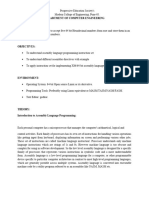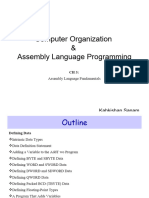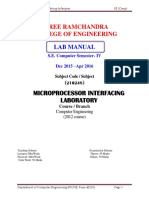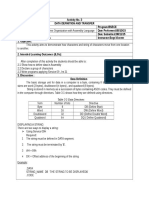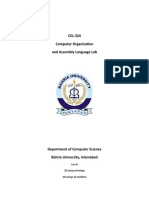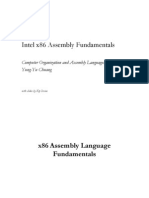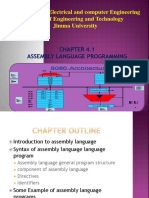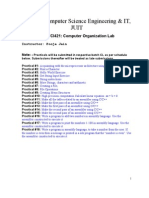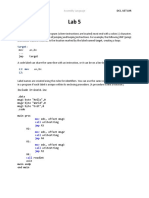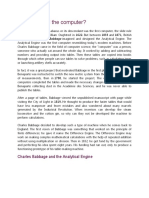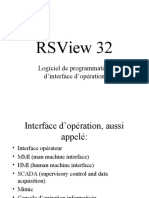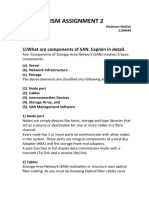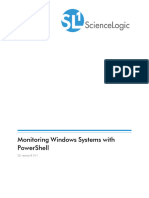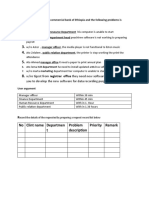0% found this document useful (0 votes)
38 views4 pagesLab-03-Memory Access in Assembly Language
The document outlines Lab 3 for the CS-235 course at the National University of Sciences and Technology, focusing on memory access in assembly language. It includes objectives, exercises related to data transfer and manipulation instructions, and procedures for displaying register or memory contents. The lab report requires students to perform tasks such as inserting values in hexadecimal format and displaying strings and register contents using specific assembly instructions.
Uploaded by
abrarbuttmi7Copyright
© © All Rights Reserved
We take content rights seriously. If you suspect this is your content, claim it here.
Available Formats
Download as DOCX, PDF, TXT or read online on Scribd
0% found this document useful (0 votes)
38 views4 pagesLab-03-Memory Access in Assembly Language
The document outlines Lab 3 for the CS-235 course at the National University of Sciences and Technology, focusing on memory access in assembly language. It includes objectives, exercises related to data transfer and manipulation instructions, and procedures for displaying register or memory contents. The lab report requires students to perform tasks such as inserting values in hexadecimal format and displaying strings and register contents using specific assembly instructions.
Uploaded by
abrarbuttmi7Copyright
© © All Rights Reserved
We take content rights seriously. If you suspect this is your content, claim it here.
Available Formats
Download as DOCX, PDF, TXT or read online on Scribd
/ 4










